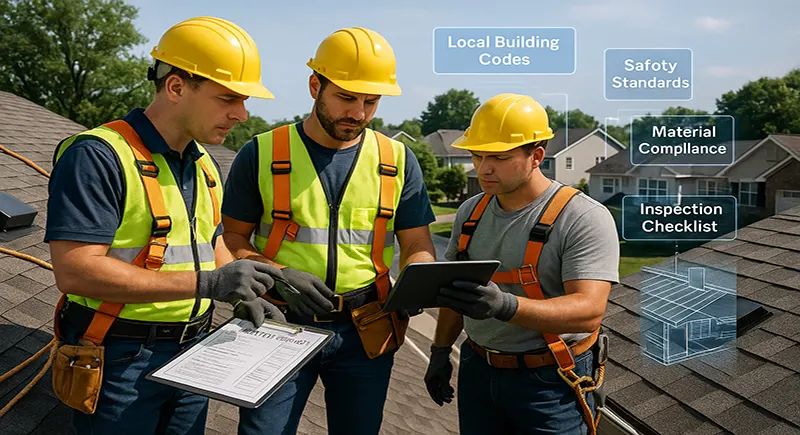Protect Your Mobile Home Investment in Central Florida
Owning a mobile home in Central Florida is a significant investment. From hurricanes and shifting soils to moisture and pests, numerous factors can threaten your home’s safety and value. Florida Truly Level Mobile Home Service provides comprehensive solutions to protect your mobile home investment in Central Florida, ensuring long-term stability, compliance, and peace of mind.
📞 Call Today: 1 (689) 340-5795
📍 1757 S Village Dr, Deltona, FL 32725
Why Protecting Your Mobile Home Matters
Mobile homes face unique challenges compared to traditional homes. Without proper care, even minor issues can escalate into costly repairs. Key risks include:
- Uneven floors or foundation settling
- Storm damage during hurricane season
- Moisture-related damage to floors and crawlspaces
- Pest and rodent intrusion
- Non-compliance with HUD tie-down regulations
Our team ensures Central Florida manufactured home leveling specialists provide preventive solutions that protect your home from these risks.
Comprehensive Protection Services
We offer a full range of services to safeguard your mobile home investment:
Mobile Home Leveling & Foundation Support
- Mobile home releveling and foundation repair in Central FL
- Pier & beam support adjustments for structural stability
- Ensuring proper weight distribution and alignment
Tie-Down & Retrofit Services
- HUD-compliant tie-down and retrofit services across Central Florida
- Storm-ready anchoring and strap replacements
- Compliance upgrades for insurance and financing
Skirting & Exterior Protection
- Central Florida mobile home skirting installation & protection
- Skirting strap installation for secure, durable exterior
- Pest prevention and improved energy efficiency
Under-Home Protection
- Vapor barrier repair and crawlspace moisture control in Central Florida
- Under-home insulation
Top Roofing Standards and Codes Followed by Madison Roof Repair Companies for Compliance
Precision defines professional roofing work, and in Madison, meeting construction codes is more than formality—it’s the foundation of safety and reliability. Roof repair companies adhere to a series of industry and municipal standards that guarantee each project stands up to inspection and performance testing. These regulations shape how materials are selected, how systems are installed, and how long they last for property owners seeking dependable roof repair near me.
Adherence to Local Wind Uplift and Load-Bearing Regulations
Local codes in Madison require roofs to withstand wind pressures that match the area’s weather patterns. Specialists analyze uplift forces on shingles, fasteners, and structural framing before installation begins. This attention to detail ensures that materials and attachment methods meet both manufacturer specifications and municipal wind standards.
Beyond basic wind load requirements, roof repair professionals also calculate snow and live loads to determine appropriate structural reinforcement. By designing to these standards, companies reduce the risk of deck sagging, fastener failure, or surface separation over time. These compliance measures form the backbone of durable Madison roof repair services that last through every season.
Compliance with State-approved Fire Resistance Classifications
Building codes classify roofing materials based on their ability to resist fire spread. Roof repair specialists use membranes, underlayments, and coatings that meet state-approved Class A or B fire ratings depending on the structure’s location and type. These classifications ensure that roof assemblies can delay ignition and prevent flames from advancing between sections. In commercial and multifamily buildings, higher fire resistance ratings are often mandatory. … READ MORE >>>
Smart Wellness Condos for Urban Families and Investors at Narra Residences
Introduction: A Modern Urban Lifestyle for Families and Professionals
In today’s Singapore real estate market, homeowners and investors are increasingly seeking properties that combine smart technology, wellness amenities, and luxury living. Narra Residences meets this demand by offering condos that cater to families, professionals, and investors. With advanced smart features, premium interiors, wellness-oriented amenities, and a prime urban location, Narra Residences delivers a balanced lifestyle that blends comfort, convenience, and long-term investment potential.
Prime Location: Connectivity and Convenience at Your Doorstep
Narra Residences is strategically located near MRT stations, top schools, shopping centers, and business hubs. Families benefit from proximity to educational institutions, parks, and recreational areas, ensuring a convenient and balanced daily lifestyle. Professionals enjoy easy access to workplaces and lifestyle destinations, reducing commute times. Investors are attracted to the property’s high-demand location, which ensures strong rental yields and consistent capital appreciation. This combination of accessibility and convenience makes Narra Residences a highly desirable address in Singapore.
Luxury Interiors: Functional Elegance for Modern Living
The units at Narra Residences are designed to combine style and practicality. Open-plan layouts maximize natural light, creating bright and inviting living areas. Premium finishes in kitchens, bathrooms, and living spaces enhance sophistication, while flexible zones accommodate home offices, study spaces, or leisure activities. Bedrooms offer private retreats, and communal areas encourage family bonding. This blend of luxury, functionality, and flexibility appeals to modern families and makes the units highly marketable for investors seeking quality properties.
Smart Home Technology: Convenience and Efficiency
Each unit … READ MORE >>>
Green Living: Sustainability and Eco-Friendly Initiatives at Pinery Residences
At Pinery Residences, modern luxury meets environmental responsibility.
Sustainability and eco-friendly practices are integrated into the community’s design, operations, and amenities. From energy-efficient systems and waste management solutions to green landscaping and eco-conscious materials, Pinery Residences promotes a lifestyle that values both comfort and the planet.
This is where forward-thinking design, responsible living, and modern convenience converge.
Energy-Efficient Building Design
The residences are designed with energy conservation in mind.
High-performance insulation, double-glazed windows, and optimized building orientation reduce energy consumption and minimize heat gain. Residents benefit from a comfortable indoor environment while lowering utility costs and environmental impact.
Smart Energy Management Systems
Advanced technology enables efficient energy usage.
Smart meters, automated lighting, and climate control systems allow residents to monitor and adjust electricity consumption. Proactive energy management reduces waste, enhances sustainability, and encourages environmentally conscious living.
Water Conservation Measures
Pinery Residences implements water-saving strategies throughout the community.
Low-flow fixtures, rainwater harvesting, and efficient irrigation systems minimize water wastage. Sustainable water practices support eco-friendly living while maintaining lush gardens and outdoor spaces.
Waste Management and Recycling Programs
Residents have access to comprehensive waste disposal and recycling facilities.
Recycling bins, organic waste composting, and structured collection systems encourage responsible disposal habits. Community-wide participation in recycling programs reduces landfill contributions and fosters environmentally conscious behavior.
Green Landscaping and Biodiversity
Landscaping is designed to promote biodiversity and ecological balance.
Native plants, flowering trees, and sustainable gardening practices create habitats for birds, butterflies, and pollinators. Green spaces support wildlife, enhance aesthetic appeal, and contribute … READ MORE >>>
One Sophia Singapore: Smart Security, Safety, and Privacy for Modern Urban Living
A Secure Home in the Heart of District 9
One Sophia Singapore, located on Sophia Road in the prestigious District 9, offers residents more than luxury—it provides a safe and secure environment that prioritizes privacy and peace of mind. In today’s fast-paced urban lifestyle, having a residence that ensures personal security and controlled access is essential. One Sophia integrates advanced security systems, thoughtful building design, and private layouts to create a sanctuary where residents can live comfortably and confidently.
Advanced Security Systems for Peace of Mind
The development features state-of-the-art security technology to protect residents and their families. Controlled access points, 24/7 surveillance cameras, and monitoring systems ensure that only authorized individuals can enter the premises. This high level of security minimizes potential risks and provides peace of mind, whether residents are at home, at work, or traveling. For families, expatriates, and professionals, such measures are a critical component of urban luxury living.
Privacy-Focused Architectural Design
One Sophia’s architectural layout emphasizes privacy alongside luxury. Residences are strategically positioned to reduce visibility from neighboring units and common areas, creating a sense of personal space. Soundproofing, thoughtfully designed corridors, and selective placement of communal facilities ensure that residents can enjoy quiet, uninterrupted living while still accessing amenities conveniently. This approach balances exclusivity with community engagement.
Smart Home Integration Enhances Safety
Smart home technology at One Sophia adds an additional layer of security and convenience. Residents can monitor and control access, lighting, climate, and alarm systems remotely through integrated smart devices. Automated alerts … READ MORE >>>














